The Ultimate Guide to the Best Asian Tropical Fruit
Tropical fruits are widely available in many shops today, and lots of them are still fascinating to look at and use. Many have tried to import these fruits to less tropical regions and some have been successfully grown there, but others don’t flare so well and don’t grow even in mild Mediteranean winters.
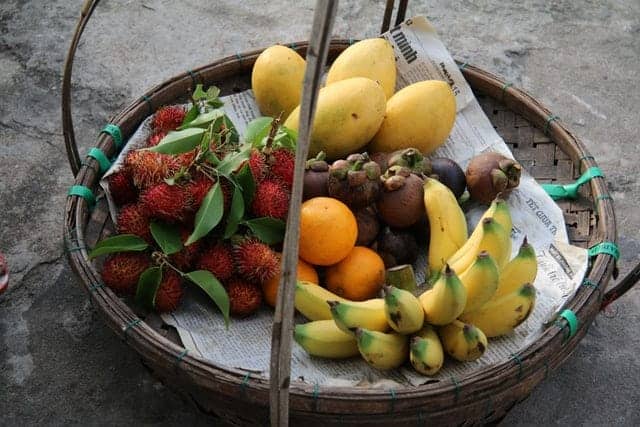
Although it is important to us to reduce our carbon footprint, efficient cargo distributes these products around the world and people like to mix up their fruit choices and try new flavours.
Popular Asian exotic fruit
Because tropical fruit is usually picked when ripe, it is delicate and should be consumed shortly after harvesting. We have tasted many of the less well known tropical fruits during our travels and today we are happy to share some of our thoughts about them. Most fruits we describe in this article come from the Asian and the African continents.
Buddha’s hand
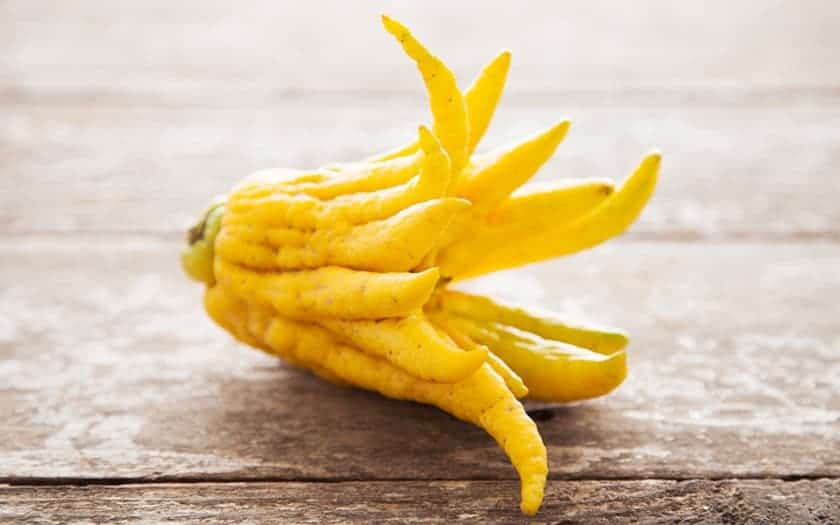
This lumpy lemon with fingers smells like heaven.It is mainly popular around new year because it is believed to symbolize happiness, wealth and longevity.
Although the zest of this special fruit is sometimes used to add additional fragrant flavour to salads or desserts, it is mainly used to garnish dishes because there is no pulp or juice.
Carambola
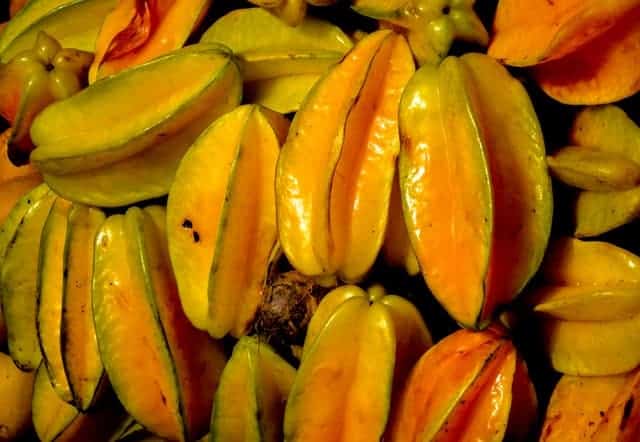
Better known as starfruit and we use it mainly to decorate our festive dishes. There is no need to peel it but just wash, slice and add to your dishes. It is usually crunchy and slightly acidic. It is not recommended for people with kidney problems, as starfruit naturally has kidney stone-forming oxalic acid.
Coconut
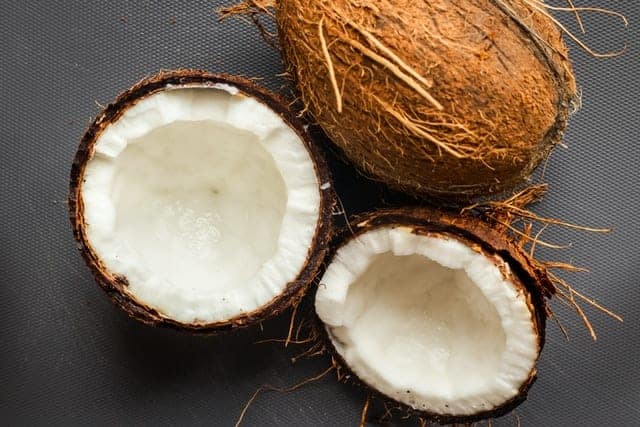
You can’t get around coconuts when living in Asia. Everything from the coconut tree is used, from the fruit to the bast and the leaves. This tropical fruit can be eaten young, the coconut water is very nutritious and when the coconut gets older and harder they use the pulp to in dishes as well as for making coconut millk.
Dragon fruit
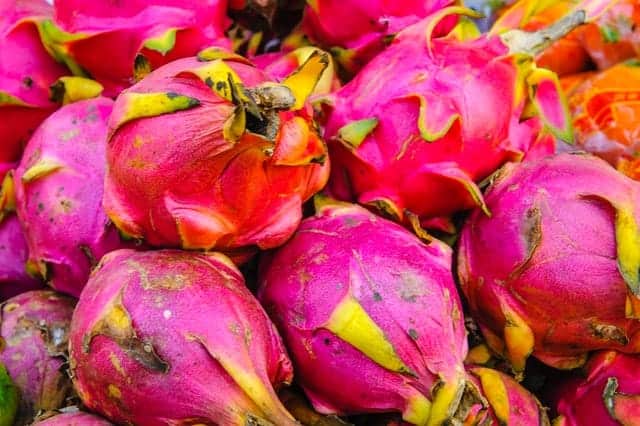
This beautiful, bright coloured fruit has a very subtle, sweet flavour and is very rich in vitamin C and iron. The white or red flesh of the fruit has little black seeds which are edible. The skin itself cannot be eaten. Add dragon fruit to salads, smoothies and yogurt, or simply snack on it by itself.
Durian

‘It stinks like hell, but tastes like heaven’ is a common saying that we personally haven’t checked yet! Durian can weigh from about 2 to 20 kilograms and has large spikes. Once opened it has a very strong odour which makes us think of the smell of rotten eggs. The smell is so strong, you are not allowed to bring it inside most hotels. The flesh is soft creamy and for Asians it is a delicacy they can’t resist when in season. After all these years in Asia, we believe it is the only thing we have not tried.
Finger lime
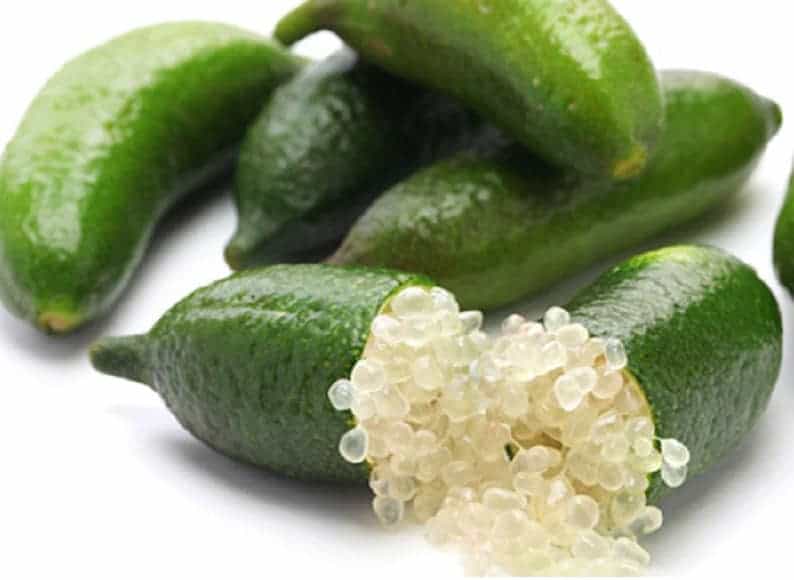
Australian finger lime is a particularly unusual type of citrus fruit. It is referred to as lime caviar because of the little ‘beads’ inside that pop when chewed. This fruit is not Asian, but it has become extremely popular when cooking gourmet food. As a chef it is a delicate finish to a high level culinary dish.
Jackfruit
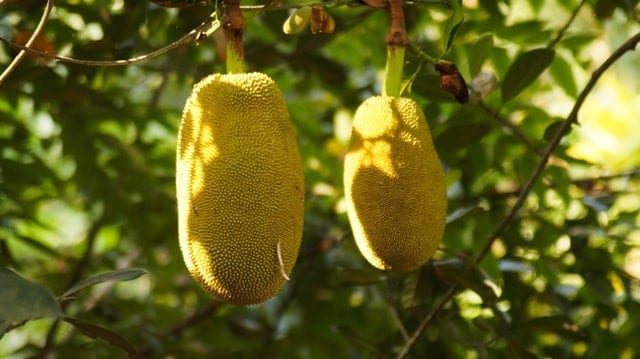
This huge fruit can weigh up to 30 kilograms and has a green skin with small soft pines. It has a very sweet perfume smell and tastes delicious raw or cooked. The fruit is high in vitamin B, potassium and protein. Ripe jackfruit has a creamy yellow flesh and half ripe it is very delicious in a curry.
Kaffir lime

This type of lime has a bumpy, hard outer skin. The leaves of the plant are best known and commonly used in Thai cuisine. The zest can be used in curry pastes, but the juice which is very acidic is only used for medicines, shampoos or essential oils.
Lychee
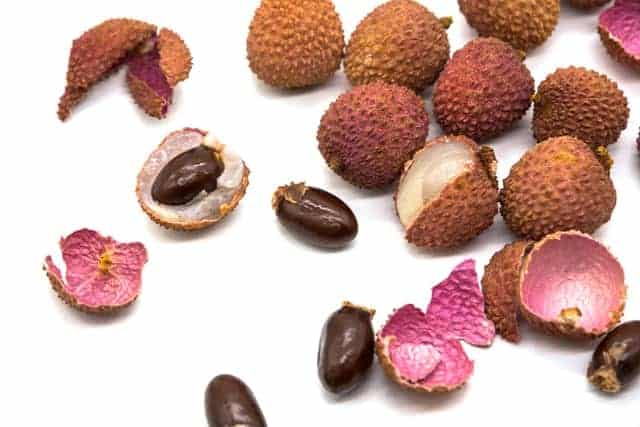
It is the most succulent, refreshing walnut-sized fruit in Asia. Native to south China, it is also grown in other parts of Asia and other tropical regions in the world. The lychee has a very short season at the very beginning of summer. The sweet summer fruit needs to be peeled as the outer rind is inedible, but it is easily removed to allow access to the white flesh inside.
It is delicious as fruit, in cocktails and to give curries a sweet finish.
Mango

It’s probably the most popular tropical fruit and the colour of the skin varies from bright yellow to red. Semi ripe mango is still green with quite hard flesh and can be eaten in salads or with some spicy sugar-salt mix as they do in Thailand. The ripe fruit is yellow and tastes sweet. It is the perfect base for a smoothie or a shake and a great additional flavour for desserts.
Mangosteen – Asian purple fruit
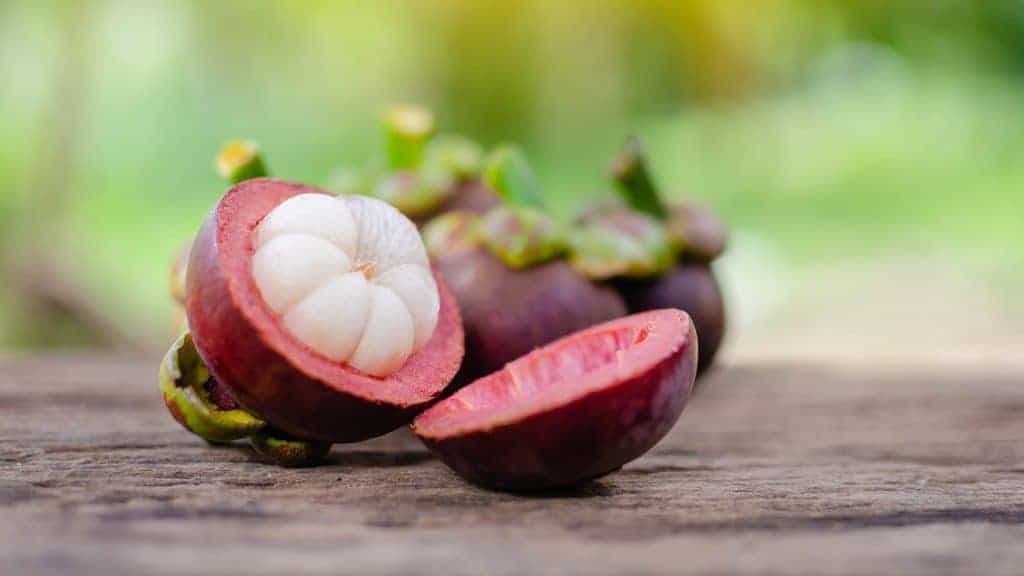
Many consider this a mysterious fruit, but this brown-purple fruit is very common in Southeast Asia. Be careful when removing the skin as the bright purple colours can stain. The white, soft, and juicy segments inside are sweet and sour and, depending on the size of the segments, they might have a small stone inside. It is only consumed fresh and a particularity is the little ‘star’ on the bottom of the fruit. This star shows exactly how many segments you will find inside the mangosteen.
Papaya
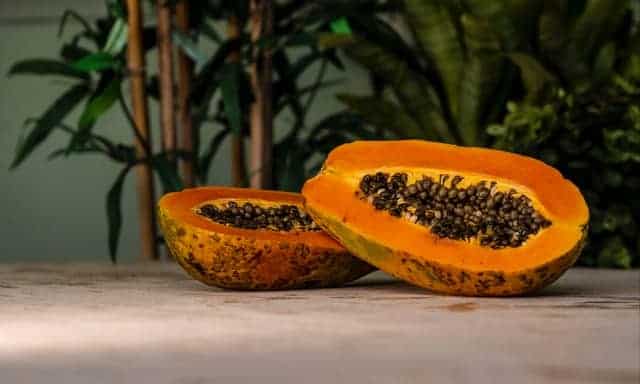
Papaya contains papain and is often used as a tenderising agent for meat. Ripe papaya is sweet and succulent but can have a very strong odour. The most common variety comes in two colours, one with almost red flesh and the other with orange-yellow flesh. Size varies from 500 grams to several kilograms. Besides a tenderising agent, papaya can be used unripe in salads such as in the famous Thai Papaya salad or when ripe as fruit with a dash of lime or lemon.
Passion fruit
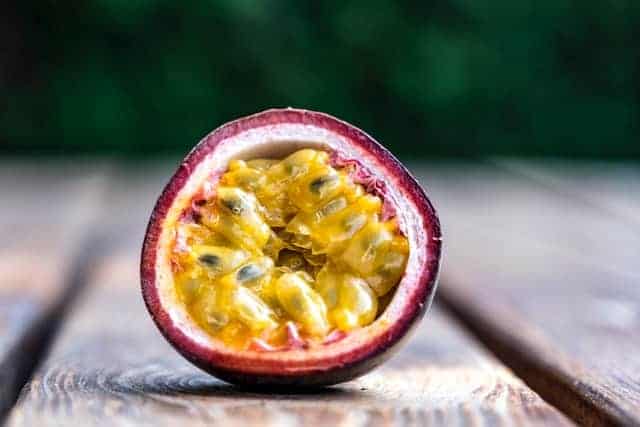
We had these growing in our garden when living in Thailand. The beautiful flowers turn into delicate tasty fruit consisting of plenty of seeds and a jelly like pulp. Some are sour, and others are sweet but they please the palate everytime and are great to flavour panna cotta or cheesecakes and they are great in cocktails.
Pepino melon
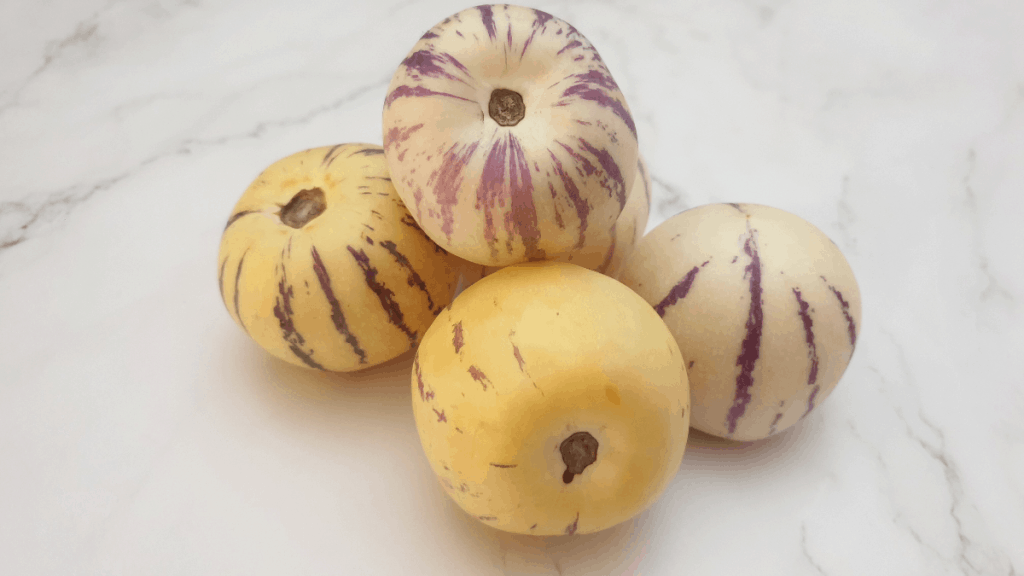
The less known pepino melon fruit is native to South America but is now also found in China. It is a small oval fruit with a firm, smooth skin. The yellow colour and the purple stripes develop when the fruit ripens. The size of the fruit can vary from the size of a plum up to the size of a big apple. This fruit has a smooth, juicy, and creamy textured flesh which is mildly sweet. The flavour is quite like honeydew melon with a touch of cucumber. Check out our recipe of Pepino-mint gazpacho
Pomelo
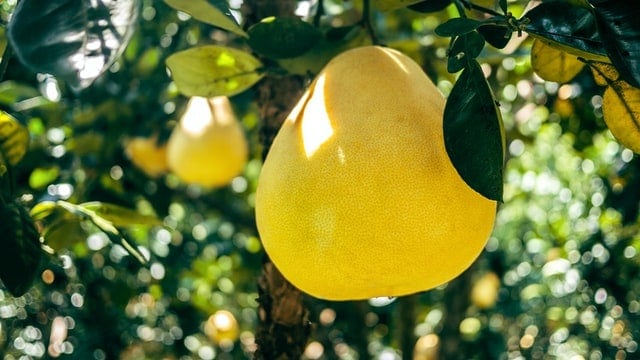
Some say it’s the Asian grapefruit although it is very different. When removing the thick rind, you can find yellow or pink flesh inside divided into segments. It tastes sweet and is never bitter and can be from juicy or dry with segments that peel perfectly from their thin skin. This is great to eat as fruit but also perfect for use in Asian salads. Find our recipe Thai style grapefruit salad.
Rambutan
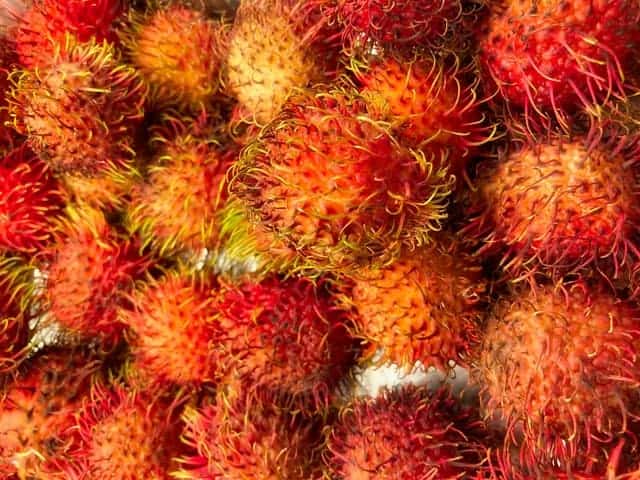
Rambutan is relative to the lychee but has a kind of hairy outer rind. Southeast Asian countries are the prime producers and consumers of this mild and refreshing fruit. This fruit is similar in size to a lychee and has white flesh when peeled. It is mainly eaten as fruit and is refreshing during hot days.
Rose apple
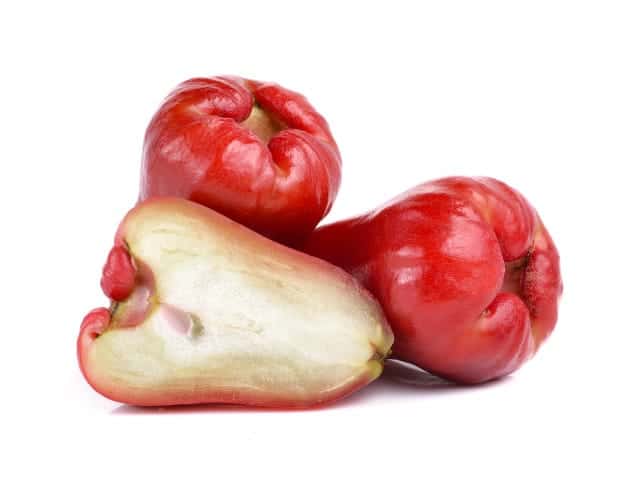
Although it’s called apple, this fruit has the shape of a small pear. The best known variety is reddish, and the flesh is quite soft. The only similarity to apples is they are eaten the same way. The seeds are often spat out as they are inedible. The flavour is bland which makes this beautiful fruit less interesting.
Salak
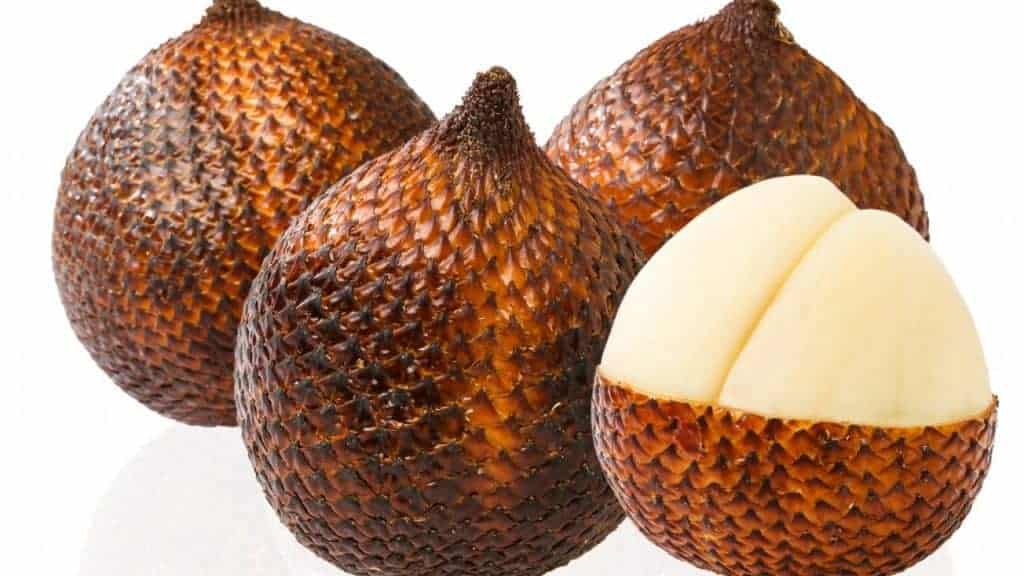
Salak is also called snake fruit and it is very common in Indonesia. This fruit has the size and form of a fig and the skin is dark brown with scales. The flavour is particularly complex with notes of banana and pineapple. The fruit is a little spongy but not juicy and it’s very easy to peel and eat straight off the rind.
Yangmei
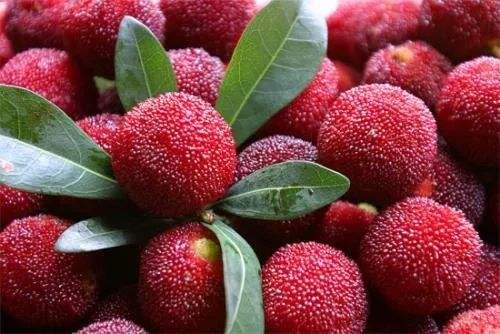
Extremely common in China, this fruit is frequently eaten raw and used to make healthy juices or create alcoholic drinks. There is a single stone in the center of the fruit surrounded by juicy pulp. We have never seen it in other Asian countries because it is very perishable making it challenging to transport.
Highlights of Asian exotic fruit and tropical Asian fruit
We are so lucky in this day and age to be able to try many foods from around the globe. At one time bananas and coconuts were considered a luxury, but now we can taste so many more Asian exotic fruit varieties. It is quite exciting to add these new flavours to our dishes.
Browsing through the produce department at the grocery store is such a treat since we can find all sorts of different tropical Asian fruit selections. Shoppers are more familiar with them today and actually search them out for eating fresh or adding to their recipes.